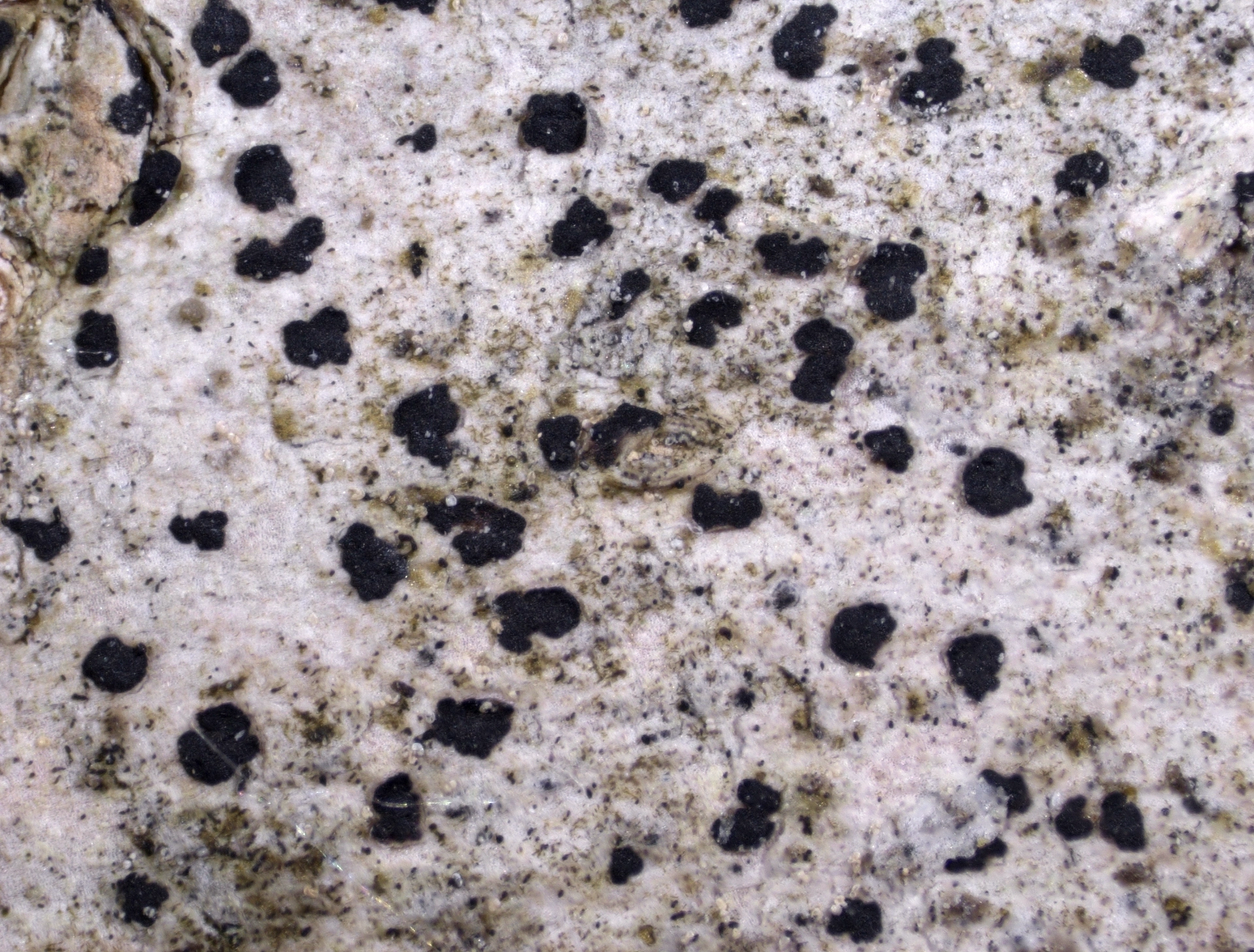Arthonia ligniariella
Arthonia ligniariella is a seldom collected species on decomposing bark and wood in forests and woodlands. It is characterized by minute convex, black apothecia growing on an indistinct thallus with chlorococoid photobiont, and colorless, 1-septate spores. Arthonia ligniariella is difficult to distinguish from similar species without microscopical examination.
- Innhold
- Description
- Ecology
- Distribution in Norway and the Nordic countries
- Global distribution
- Similar species
Description
Thallus
The immersed thallus is inconspicuous, or the apothecia are associated with a subgelatinuous mixed algal film. The thallus margin is not determinate. The photobiont is a chlorococcoid alga.
Fruitbodies
The apothecia are convex, sitting on the thallus, brownish black or black, and without pruina. They are irregularly rounded in shape, 0.1–0.2 mm in size and 65–85 μm tall.
The epithecium is 7–8 µm tall and dark brown.
The hymenium is colorless or pale yellowish brown and 25–30 μm tall.
The hypothecium is pale brown to brown and 45–55 µm tall.
The paraphysoids are 1.2–1.7 μm wide. Their tips are widened to 5 µm and bear distinct dark brown pigment caps and plaques.
The spores are colorless, narrowly obovoid to slipper-shaped, slightly constricted at the septum, 10–14 × 3–4 μm in size, and divided by 1 transverse septum.
Anamorph
Pycnidia are not reported for the species.
Chemistry
The thallus does not react with C, K, KC, Pd, or UV (C–, K–, KC–, Pd–, UV–). Lichen secondary compounds have not been detected by TLC.
The hymenium reacts I– (negative) and KI– (negative). A KI+ blue ring structure has not been observed in the asci.
Ecology
Arthonia ligniariella mostly occurs on soft decomposing wood and bark, but it is also reported in the British Islands from weathered hardboard, moribund Leucobryum cushions or humid soils in old metal mining areas. The species has been found in Norway on wood and decomposing bark of goat willow (Salix caprea) and Scots pine (Pinus sylvestris), and on rain-sheltered branches of old Norway spruce (Picea abies).
Distribution in Norway and the Nordic countries
Arthonia ligniariella is known from scattered localities in Viken, Innlandet and Trøndelag. It is seldom reported but it might be overlooked due to its small size and less frequently monitored substrates. In the Nordic countries, it is also known from Denmark and Sweden.
Global distribution
Outside the Nordic Countries, A. ligniariella is widely distributed but seldom reported in western and central Europe and in North America.
Similar species
Arthonia ligniariella differs from superficially similar species like A. apatetica, A. fusca and Bryostigma muscigenum by the I– and KI– hymenium and asci without a KI+ blue ring structure.
Arthonia ligniaria Hellb. differs by the larger spores, 17–24 × 7–8 μm in size, that turn brownish with age. This species is not yet reported from Norway.
Literature
Cannon P, Ertz D, Frisch A, Aptroot A, Chambers S, Coppins BJ, Sanderson N, Simkin J and Wolseley P (2020). Arthoniales: Arthoniaceae. Revisions of British and Irish Lichens 1: 1–48.
Coppins BJ (1989). Notes on the Arthoniaceae in the British Isles. Lichenologist 21: 195–216.
Frisch A, Klepsland J, Palice Z, Bendiksby M, Tønsberg T and Holien H (2020). New and noteworthy lichens and lichenicolous fungi from Norway. Graphis Scripta 32(1): 1–47.
Wirth V, Hauck M and Schultz M (2013). Die Flechten Deutschlands, vol. 1+2. Ulmer, Stuttgart. 1244s.


